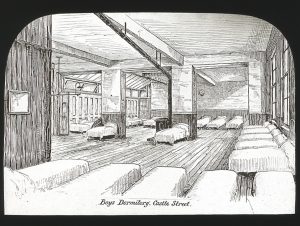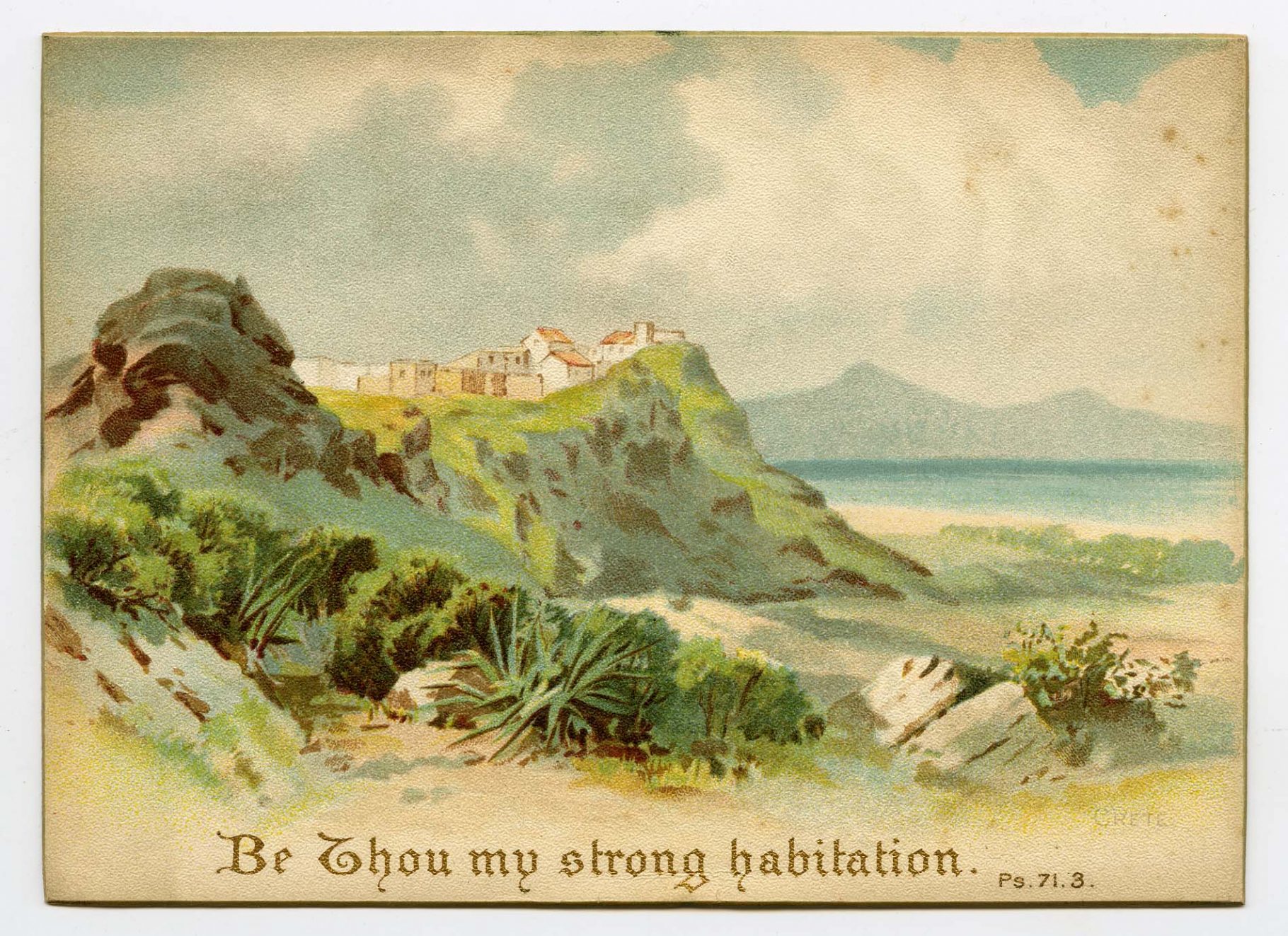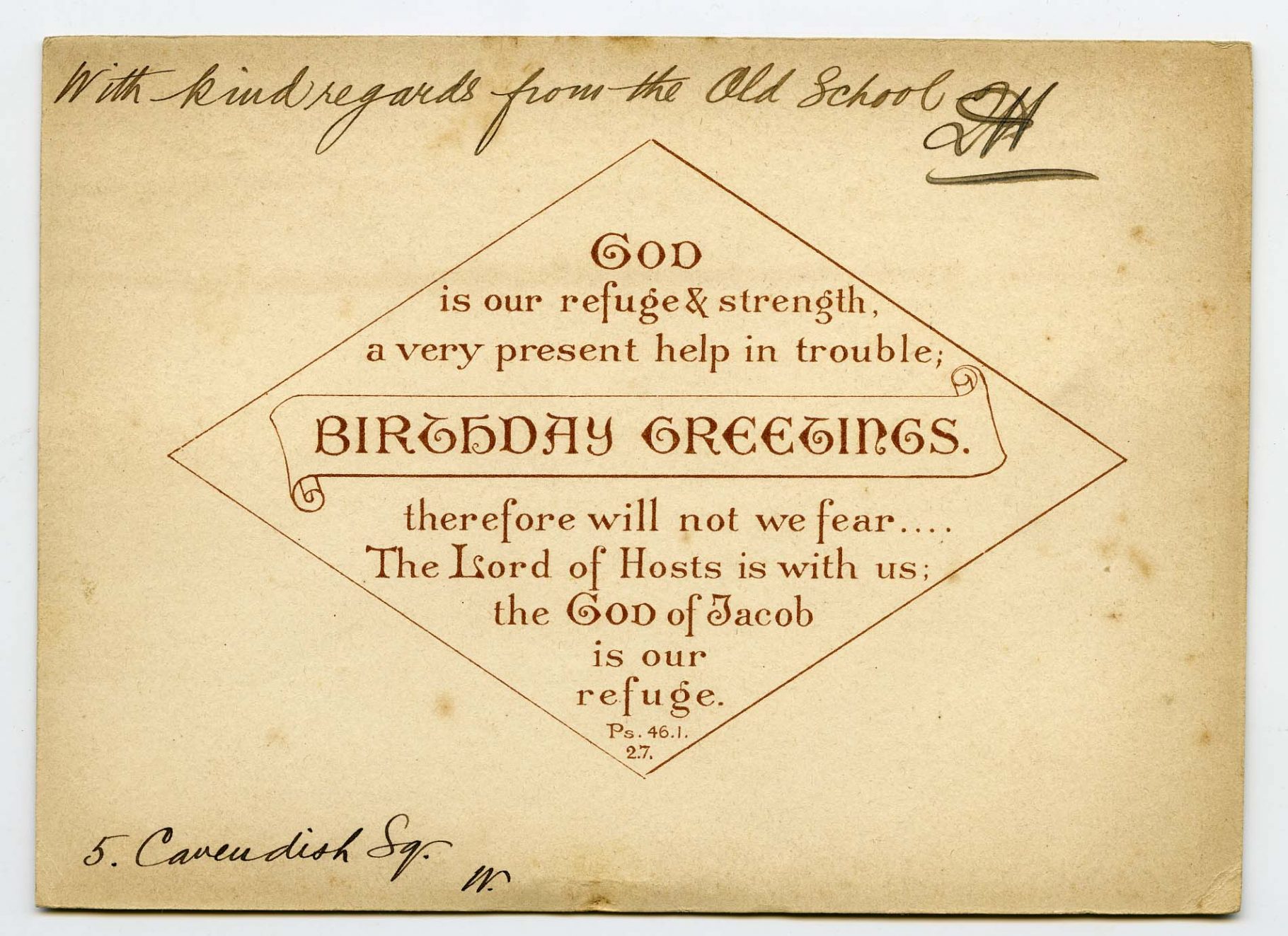Quintin Hogg
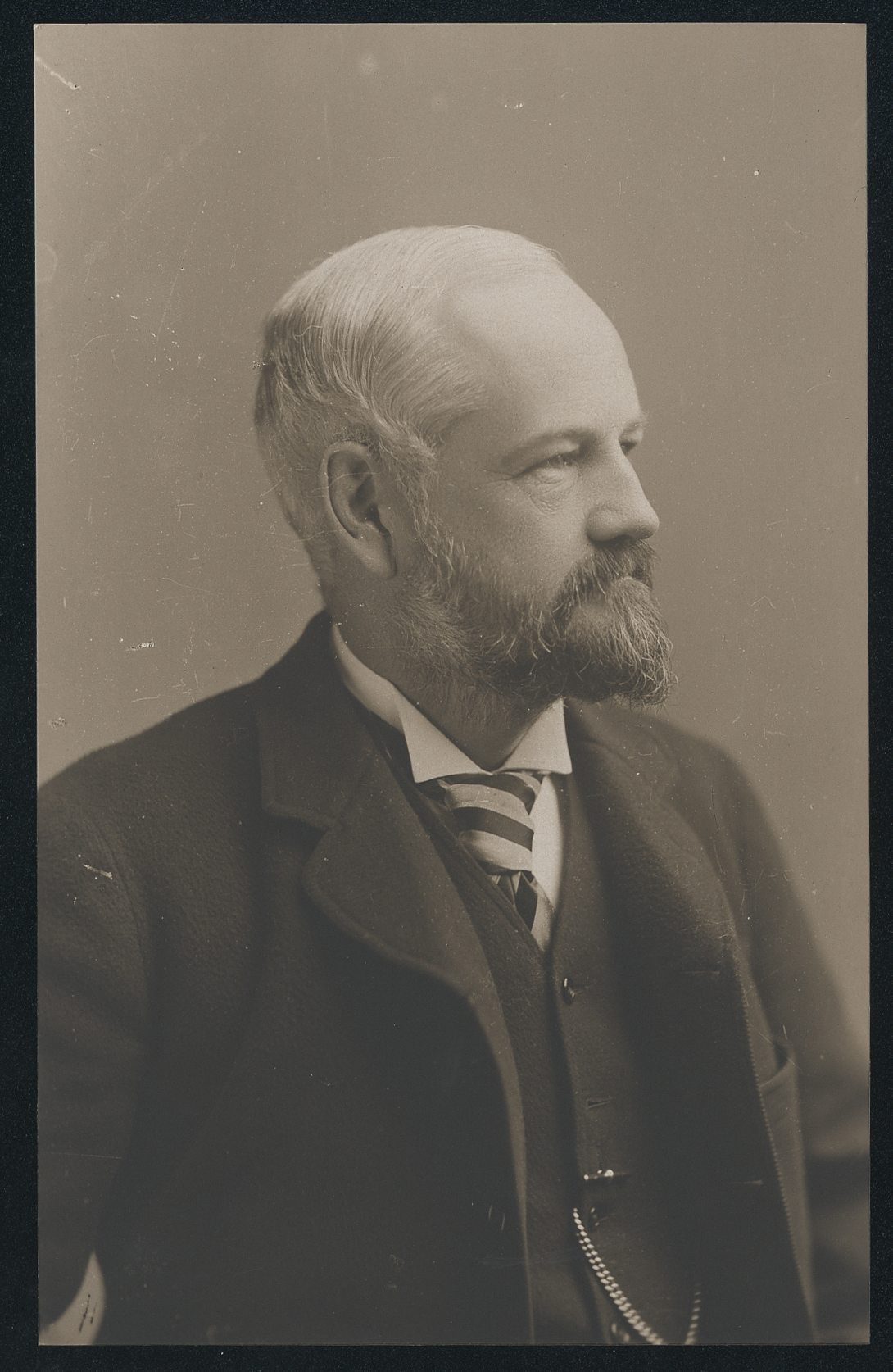
Quintin Hogg, born on 14th February 1845, was the 14th child of Sir James and Mary Hogg. After his time at Eton, he chose to go straight into business in London and joined a tea merchants and later a sugar merchants. He continued to work as a sugar merchant until his retirement in 1898. His work regularly took him to Demerara (now part of Guyana) and enabled him to establish the Regent Street Polytechnic.
Establishing the Regent Street Polytechnic
As a young adult of means, Quintin wanted to help others. His first initiative in 1860s, was to teach some of the poorest boys of London to read in the Adelphi Arches near Charing Cross. Around this time, he also acquired a shoe-black’s outfit and slept rough in order to better understand their lives and how to help them.
Consequently, in 1864, with the help of fellow Old Etonian Arthur Kinnaird, he acquired a building in Of Alley and established a school there for the female flower sellers of Covent Garden. His sister Annie was among those who taught the women bible classes.
This work soon expanded and Hogg established the York Place Ragged School (just off the Strand). In 1867, it is estimated that 175 boys found work as a result of the School [1]. Due to demand, larger premises were again required and so, in 1868, the School moved to Castle Street where the front of the building was for girls and the rest for boys. This building also enabled Hogg to provide dormitories.
Boys Dormitory, Castle Street
As the boys attending the School reached adulthood, Hogg wanted to continue providing for their intellectual, social, athletic and religious needs. As a result, Hogg’s focus turned to helping working class men and he established the Youth’s Christian Insitute in 1873. In 1878, this became the Young Men’s Christian Institute (YMCI) when it moved to Long Acre. In 1882, the ever-growing YMCI needed a bigger building so Hogg bought the former Royal Polytechnic Institution building at 309 Regent Street where the University remains today. The word Polytechnic was inscribed above the door and so, by 1891, Hogg’s institute had become the Regent Street Polytechnic.
When he wasn’t travelling for work, Hogg’s life was very devoted to his Polytechnic. He bought a house directly behind the Poly at 5 Cavendish Square where he lived with his family. He gave Bible classes and he held Conversazione with members (see the New Year’s Fete blogpost). He also handwrote mass-printed letters that were sent to all members (a few of which have survived and are held in the University Archive) and sent boys birthday cards.
Birthday card sent to a Poly boy by Hogg (HOG/1/1/16/7)
Hogg was held in high esteem by the members of his Poly. On his return home from a trip to the East Indies in 1899, a song was written entitled ‘Welcome Home’. His letters home from such trips abroad were published in the Polytechnic Magazine so members could follow Mr and Mrs Hogg’s travels.
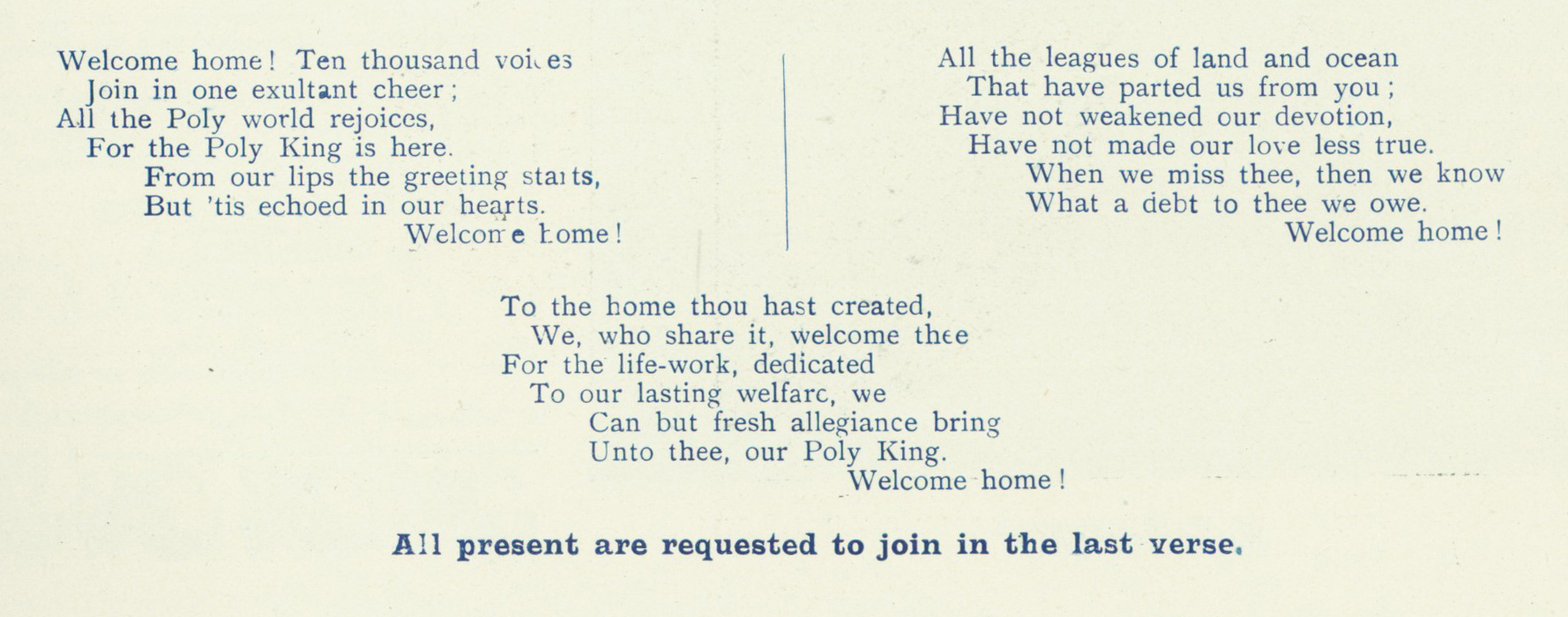
Welcome Home Programme, 1899 (RSP/6/8/1)
His wife Alice was also very involved. In 1888, she established and ran the Young Women’s Christian Institute which started at 15 Langham Place and moved to Little Titchfield Street in 1929.
Hogg’s Beliefs
Hogg was a devout Christian and, while at Eton, established a bible reading club that was called a ‘synagogue’. One of the few personal posessions of Hogg’s held by the University Archive is the bible given to him by his mother in 1885 and found open on his desk on the day of his death. Hogg clearly treasured this and made numerous annotations in the margins.

Quintin Hogg’s Bible (HOG/1/3/3)
Nevertheless, Hogg was not interested in organised religion and did not attend church. He did not provide a chapel for members of his Institute but instead, throughout his philanthropic work, gave bible readings himself. Each issue of the Polytechnic Magazine during Hogg’s life, was infused with Hogg’s religious beliefs and teachings.
He was a firm believer in Muscular Christianity. A keen sportsman himself, he believed that by providing outlets for his members’ athletic, social, intellectual and spiritual needs, he could keep them on the ‘straight-and-narrow’. Consequently, when the Institute moved to 309 Regent Street, he was able to expand the offering of clubs and societies to join. He also immediately installed a swimming pool and gymnasium.
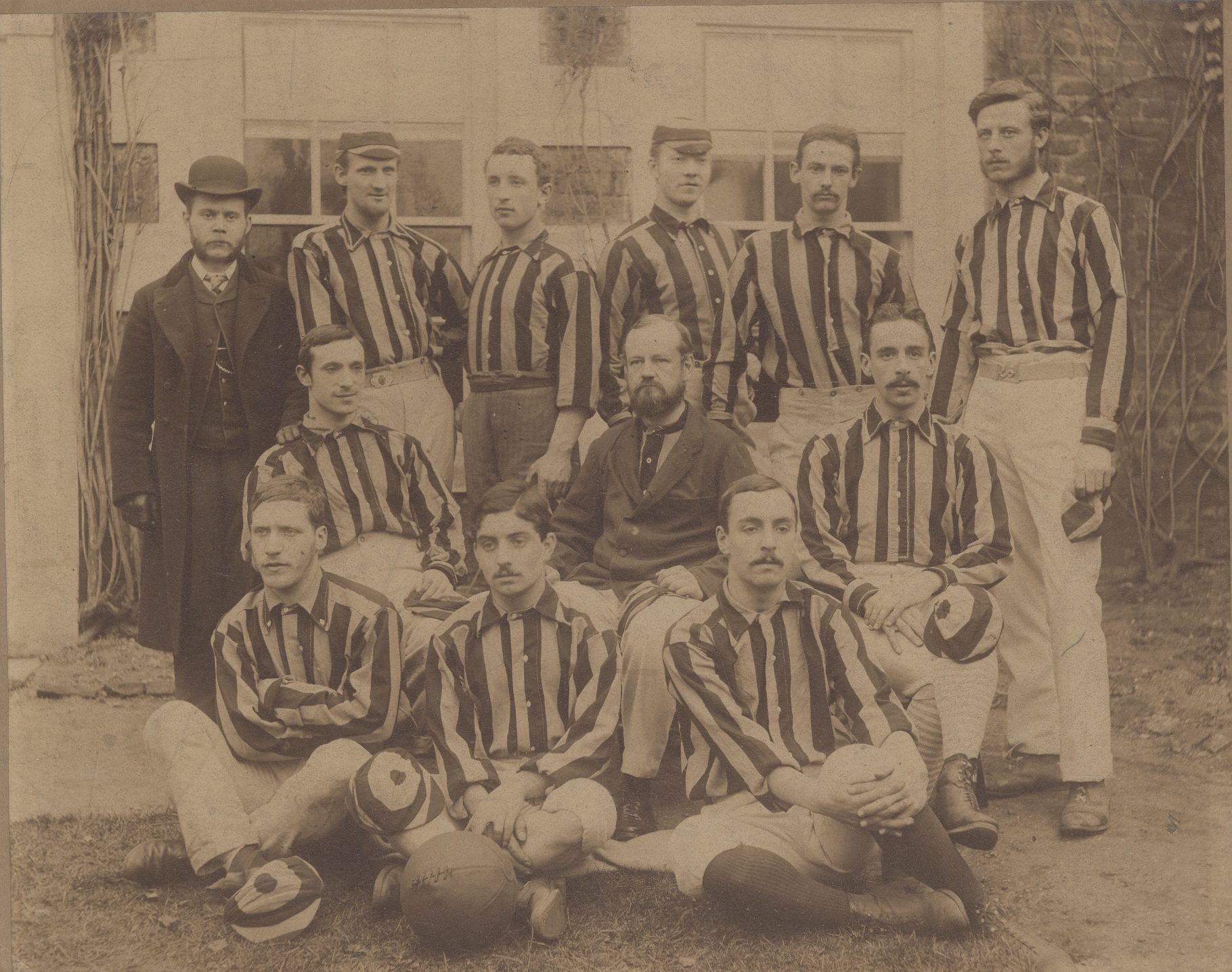
The Football Club with Hogg seated in the centre, 1882 (YCI/7/2)
Hogg was also a follower of the temperance movement. Indeed, part of his rationale behind establishing clubs and societies in the evening was that it would keep members out of the pubs. The Scheme of Administration for the Regent Street Polytechnic (1891) banned such things as swearing, smoking, dancing and theatrical performances, and drinking. While the ban on smoking was lifted in 1913 and dancing and theatre in 1929, it was not until 1961 that alcohol was permitted on Polytechnic premises.
Commemoration
Quintin Hogg died suddenly in his bathroom on 17 January 1903 as a result of fumes from a faulty gas heater. The following issue of the Polytechnic Magazine (28 January 1903) was a special memorial issue featuring tributes from those who knew him. It also reports that a memorial service was held in the Great Hall at the Poly. The Magazine states that
‘long before the hour of commencement the hall was packed…it had been thought necessary to limit the attendance to ticket-holders, and the wisdom of this was apparent for the hall has not yet been constructed that would hold all the Poly. boys and there is no Poly. boy but would have esteemed it a privilege to take part in that service’.
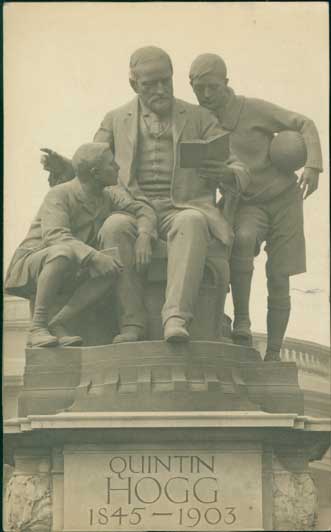
Quintin Hogg Memorial (RSP/7/g/6)
A memorial fund was soon established and the proceeds were used to install a statue in his honour on Regent Street in 1906 (now located on Portland Place). The remaining money was put towards purchasing 40 acres of land next to the existing Polytechnic Boathouse at Chiswick in order to give the Poly a permanent outdoor sportsground, something Hogg had always been keen to provide. The Quintin Hogg Memorial Sportsground, as it is still known, was officially opened in May 1906.
From 1904-1988 memorial ‘Founder’s Day’ celebrations were held every year. They were even held at the Front during World War One.
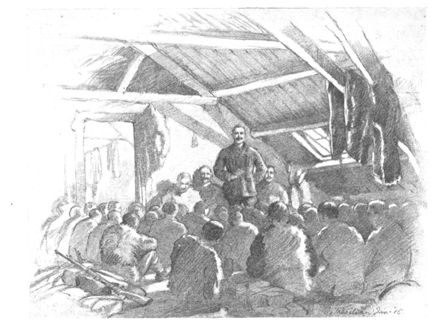
Founder’s Day at the Front, Polytechnic Magazine March 1915. Drawn by Stuart Tresilian
In 1871, Hogg married Alice Graham and they had 5 children, all of whom were involved with the Polytechnic at some stage in their lives. Their daughters, Elsie and Ethel, both held the position of President of the Young Women’s Institute. Their eldest son, Douglas became the First Viscount Hailsham. The Hogg family has remained involved with the Polytechnic/University to this day.
Problems researching Hogg
As University of Westminster academic Helen Glew details in her chapter on Hogg in Educating Mind, Body and Spirit, researching his life largely relies on secondary accounts as very few records created by Hogg exist. The University Archive holds no personal papers. As Glew argues, this could be because of his supposed preference for conducting business in person and also because many of his records were destroyed when his house, Holly Hill, near Southampton, burnt down in 1886 [2]. In addition, his daughter, Ethel Wood, wrote a biography of his life in 1904 and produced a second and third edition in 1932 and 1965. It is believed she too destroyed records when she was finished.
Nevertheless, his presence and legacy is felt in the Archive through the Polytechnic Magazine which he edited from 1878-1903, a few records including correspondence that have survived by chance, and numerous accounts of him by others.
Further Reading
Quintin Hogg and His Legacy by Helen Glew in Educating Mind, Body and Spirit
Quintin Hogg: a biography by Ethel Wood, 1904
Records relating to the Hogg Family – HOG
Private Journal of Henry Alfred Offer, Manager of the Castle Street Working Boys’ Home – YPS/5
The Polytechnic Magazine – 1878-1960 digitised and online
Footnotes
[1] Castle Street Journal – YPS/5
[2] Quintin Hogg and His Legacy by Helen Glew, in Educating Mind, Body and Spirit, page 7
